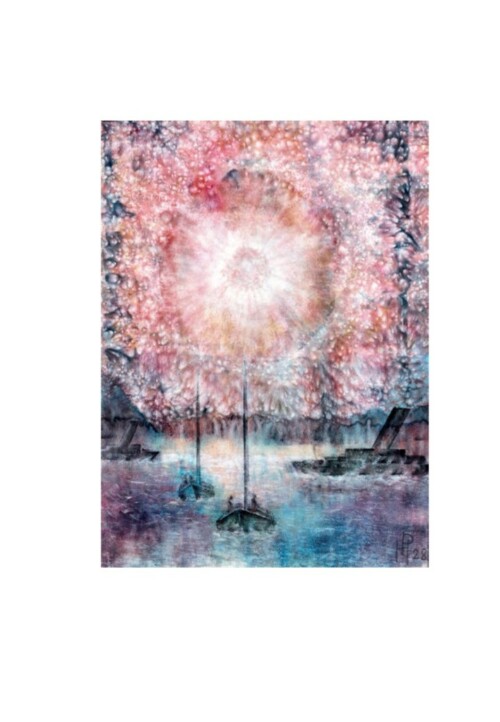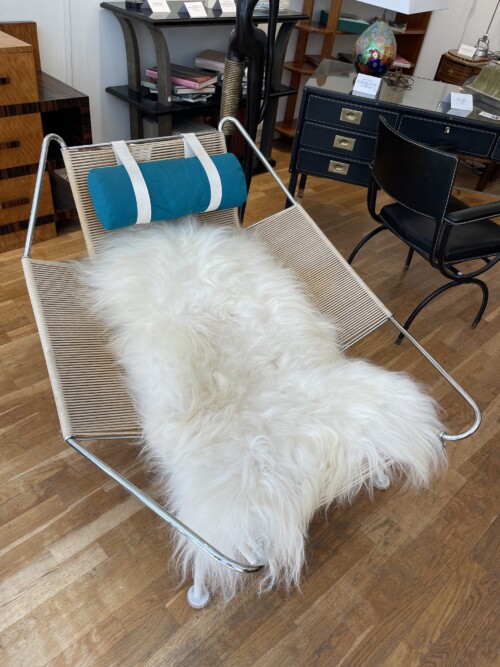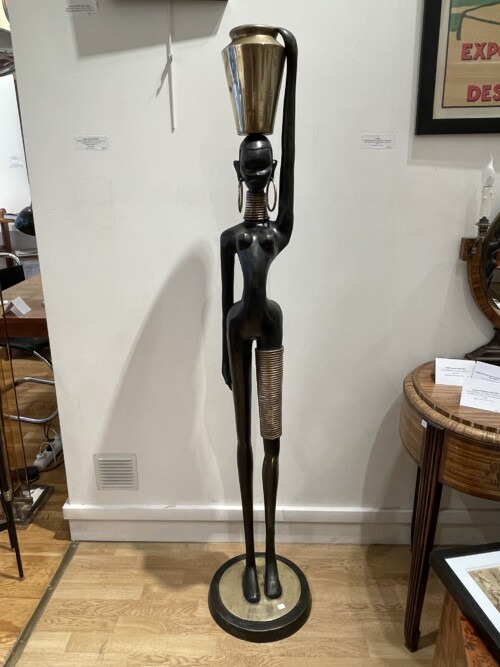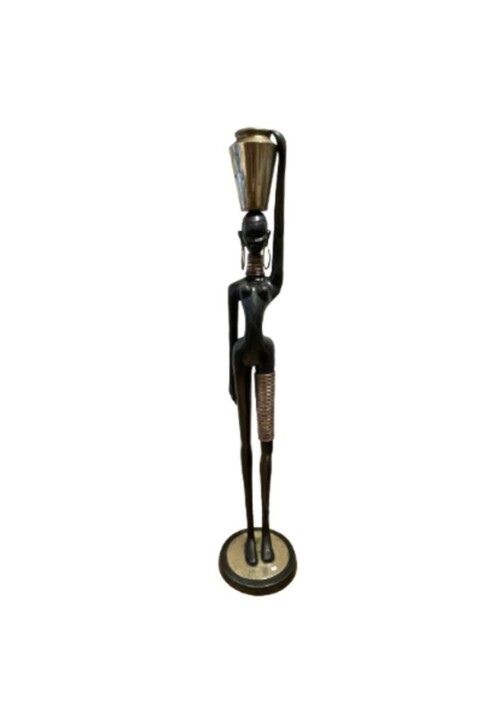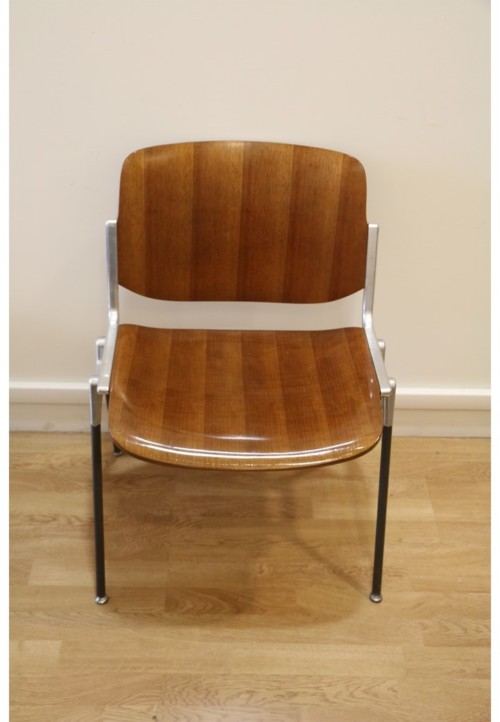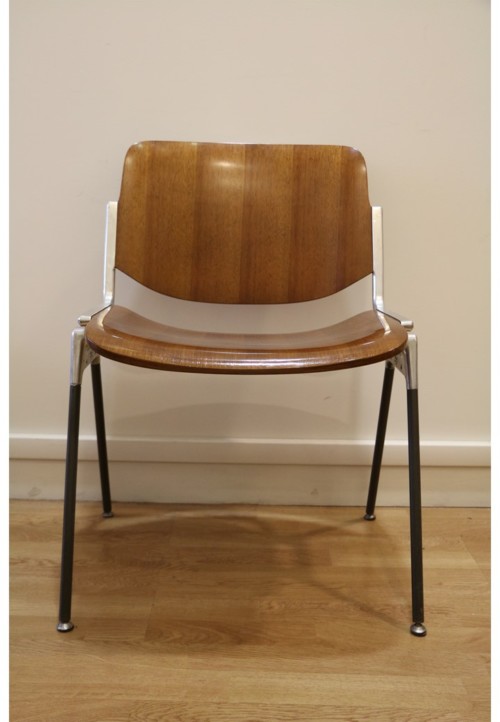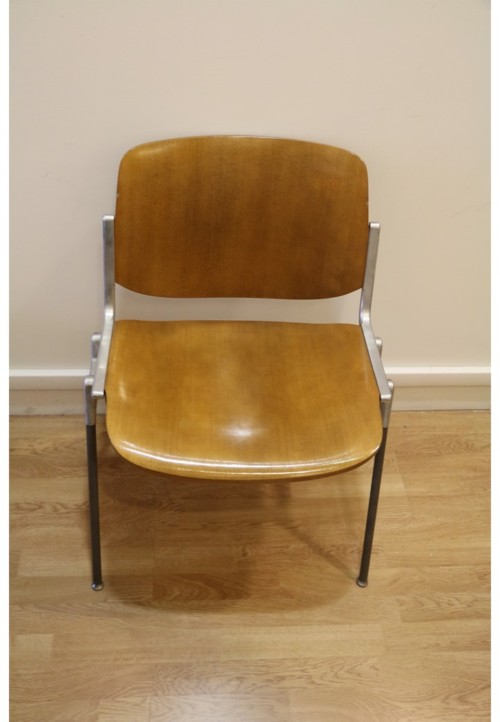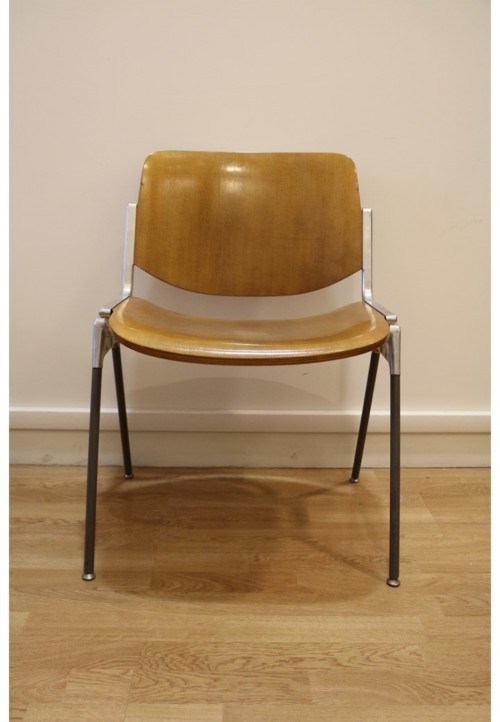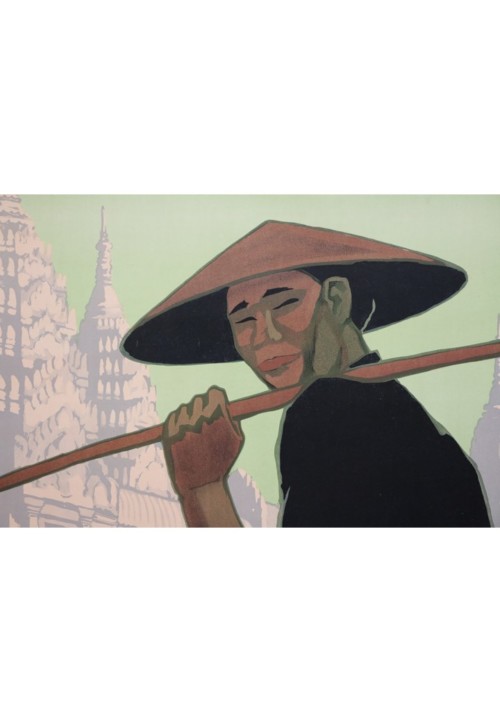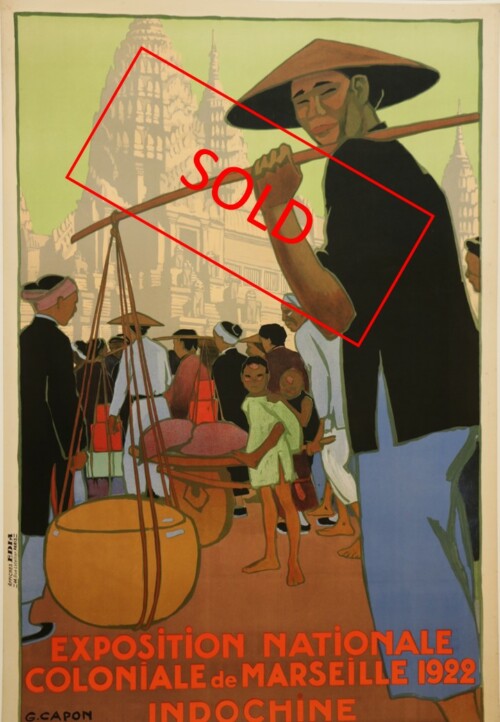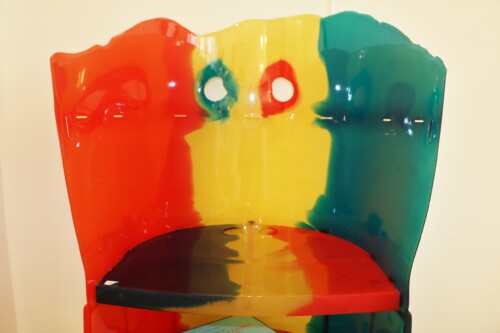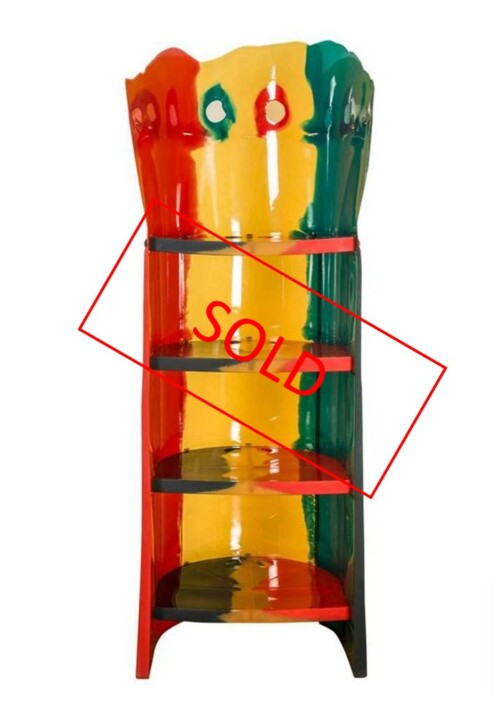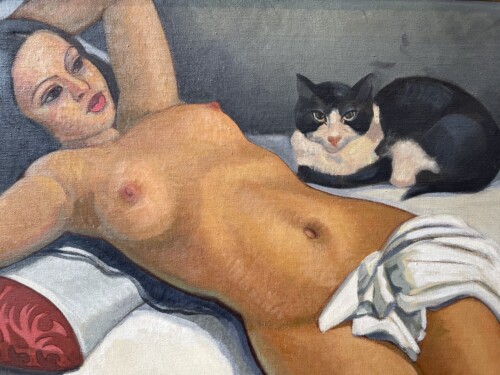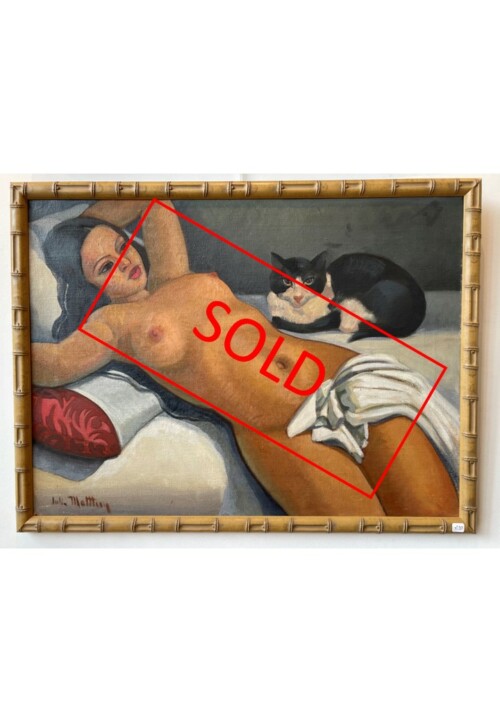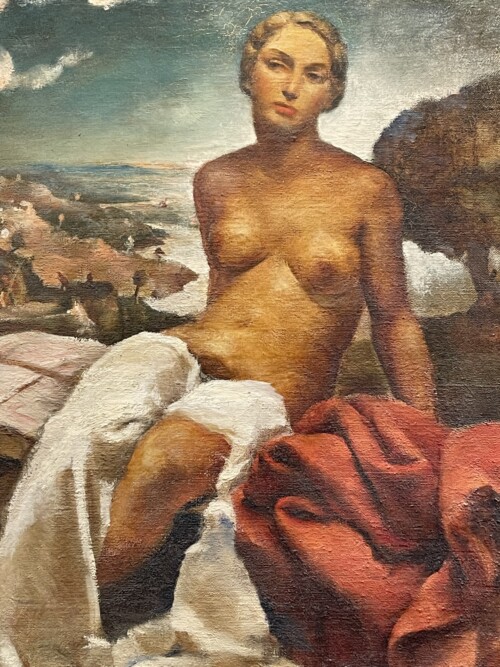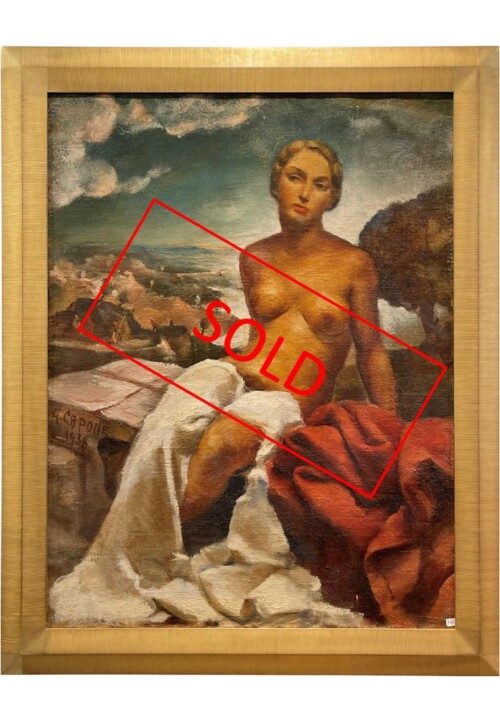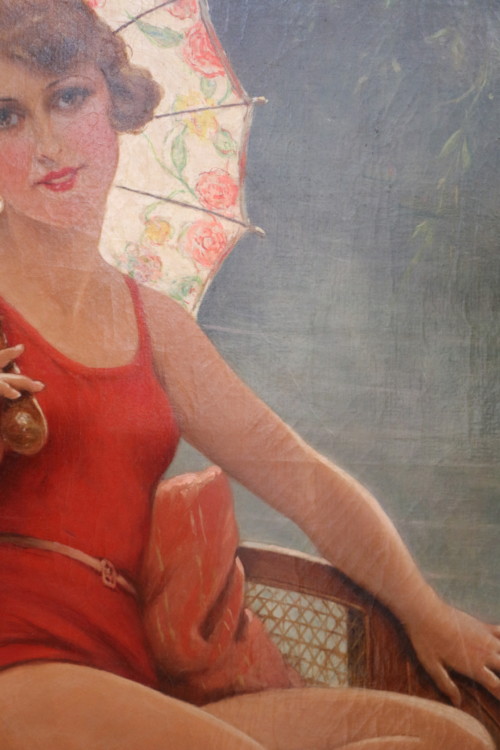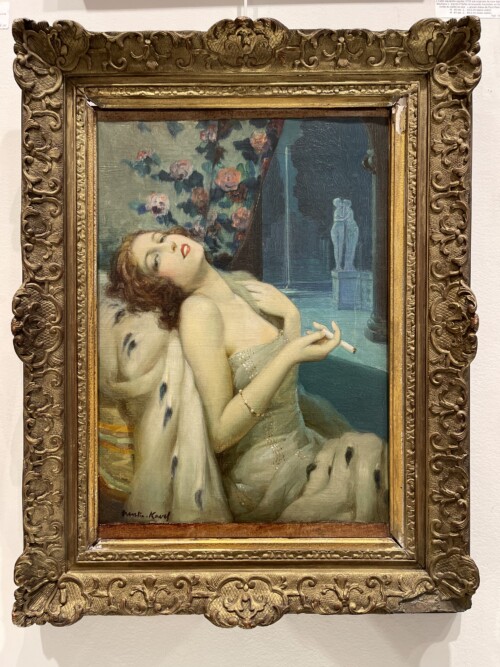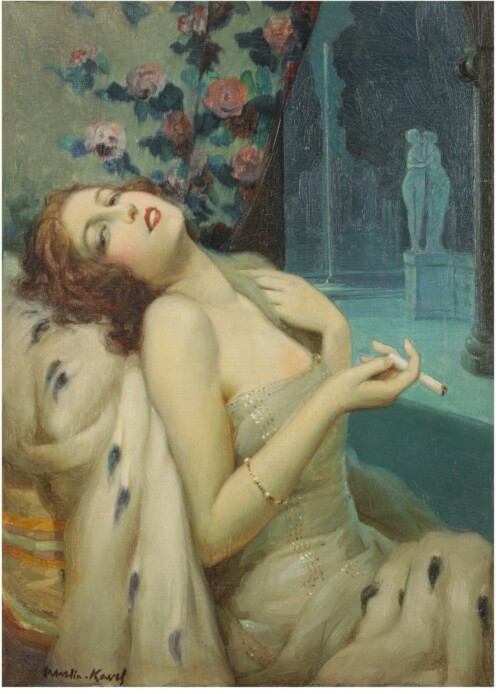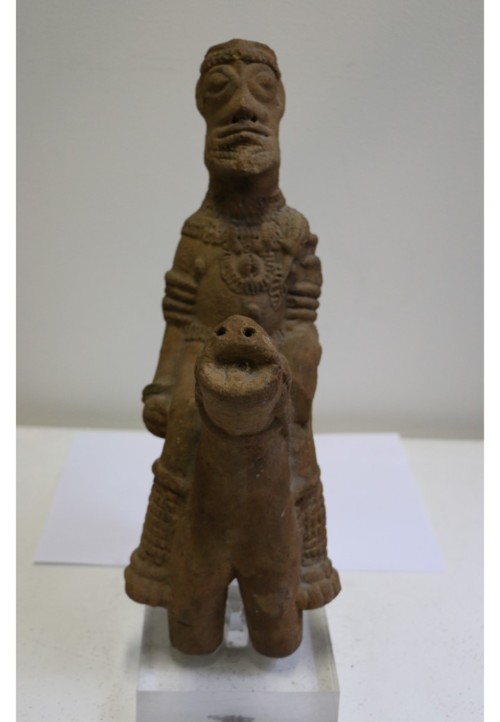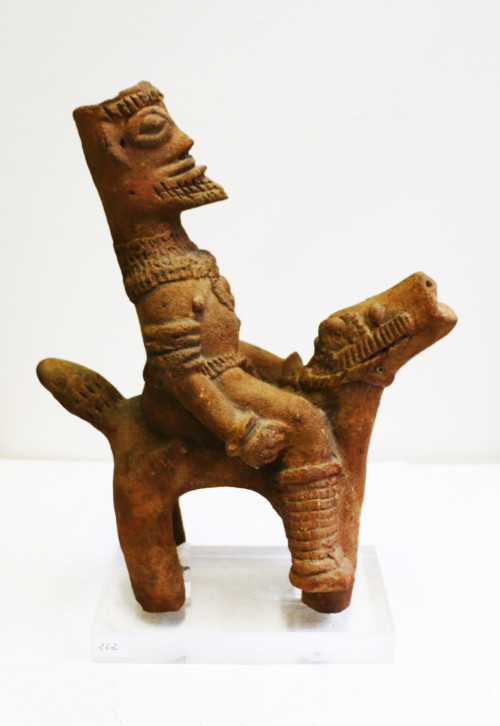A Bauhaus painting by Henri Pfeiffer 1928.
Painting with cubist style by Henri Pfeiffer (1907-1994).
Monogrammed "HP" and dated "28"
On the reverse listing of the hand of the artist: "This watercolor signed HP28 is my original Bauhaus era." Signed Pfeiffer with another entry on the lower right: "A former student of Paul Klee".
Henri Pfeiffer joined the Bauhaus at the age of 17 where he became a student of Paul Klee. He created many abstract works with a renewed vision of the use and perception of colors. Very young, he studied intensively the chemistry of pigments with his uncle. In 1933 when the Bauhaus was forbidden he was arrested by the Gestapo but he succeed to be released with the help of his parents. He then abandonned painting but still got passionate with colors becoming a famous ophtalmologist specialized in the perception of colors. He wrote a book about the subject in the 1950’s. This early genius artist, who produced an avant-garde painting work with a fascinating research on colors, is a real discovery. His history and his journey from art to science with the continuous obsession of color perception understanding is fascinating and very consistent with the ethical and philosophical Bahaus principles which never separated art from science and industy.
For more information : Henri PFEIFFER
